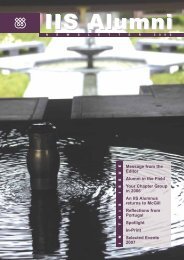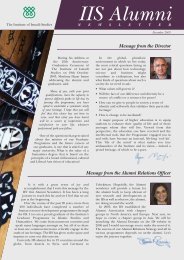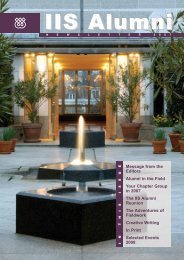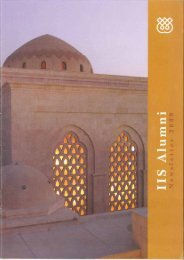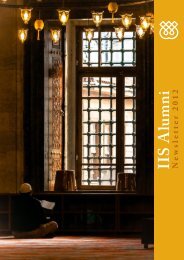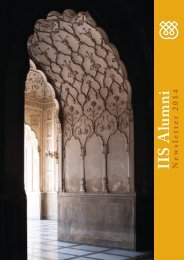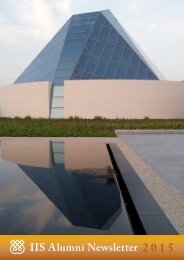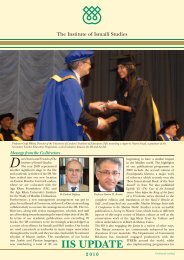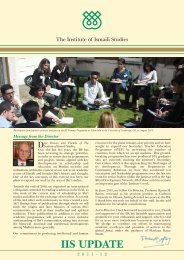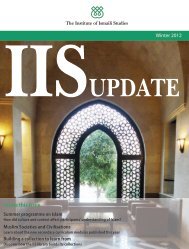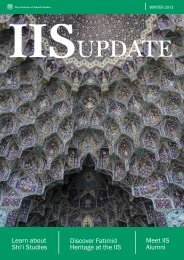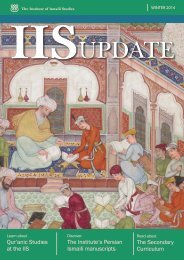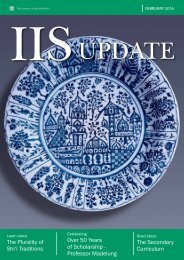Create successful ePaper yourself
Turn your PDF publications into a flip-book with our unique Google optimized e-Paper software.
COINAGE IN THE GOLDEN AGE<br />
the Mediterranean world. The early Fatimid coinage was<br />
modelled on the Aghlabids of Tunisia. The first Fatimid<br />
coins typically resembled Aghlabid coins. However, once<br />
the Fatimids had firmly established themselves as the new<br />
ruling dynasty, they started incorporating new features on<br />
their coins which included emphasis on the spiritual authority<br />
(wilaya) of Imam Ali. This is demonstrated on many of the<br />
coins through the inscription of the words, “Ali is the friend of<br />
Allah” (Ali wali Allah), which became one of the main features<br />
in the later stages of the Fatimid rule. Another common feature<br />
on many of the Fatimid coins was the Qur’anic inscription<br />
citing a verse from Surat al-Tawba (9:33):<br />
It is He who has sent His Messenger with<br />
the guidance and the religion of truth, that He<br />
may uplift it above every religion, though the<br />
unbelievers be averse.<br />
routes of the time. It is a testament to their quality that<br />
some of them have survived to the present day. The Fatimid<br />
coins in the Ismaili Special Collection at the <strong>IIS</strong> provide<br />
a unique insight into the artistic, political and religious<br />
aspects of this remarkable phase in Ismaili history, and as<br />
such the Ismaili Special Collections Unit takes great care in<br />
preserving these coins for future generations.<br />
The mandate of the Ismaili Special Collections Unit centres<br />
on developing, maintaining and preserving a unique<br />
collection of materials which are representative of Ismaili<br />
traditions and heritage, and the Fatimid coin collection<br />
fits well within this mandate. The <strong>IIS</strong> has spent over forty<br />
years building one of the largest Fatimid coin collections<br />
available and its goal is now focused on cataloguing this<br />
rich collection of coins and making them more widely<br />
available for research, scholarship and education purposes.<br />
A selection of coins are currently on display at the<br />
Aga Khan Library, London.<br />
Known as the ‘Prophetic Mission,’ the verse emphasises<br />
the importance of guidance and the role of a guide in<br />
making the religion of truth (Islam) triumphant over other<br />
religions. Its appearance on Fatimid coinage also reinforced<br />
the Fatimid Imam-caliphs’ claim of providing continuity of<br />
guidance through their lineal, designated descendants.<br />
Coins from this era reflect the expanse of the Fatimid state<br />
and the regions that they ruled. The quality of these coins<br />
is also indicative of the strength and power of the Fatimids.<br />
For example, Fatimid coins were particularly valuable in<br />
terms of their gold content in comparison to neighbouring<br />
Islamic caliphates, and thus were renowned across the<br />
Mediterranean lands as well as along the international trade<br />
The coins collection at the Institute includes some rare examples of Fatimid<br />
and Alamut coinage. Supplementing other types of surviving sources, these<br />
coins shed valuable light on important facets of Ismaili history during the Fatimid<br />
and Alamut eras. With the completion of the ongoing cataloguing project, these<br />
coins will be made better accessible for wider research and study, and I am<br />
confident that new insights will be generated through scholarship on them.<br />
Dr Wafi Momin, Head of the Ismaili Special Collections Unit.<br />
14



